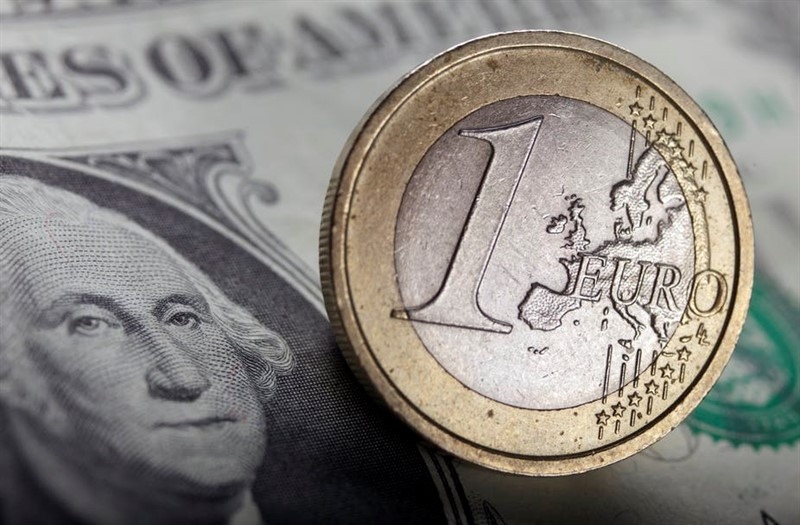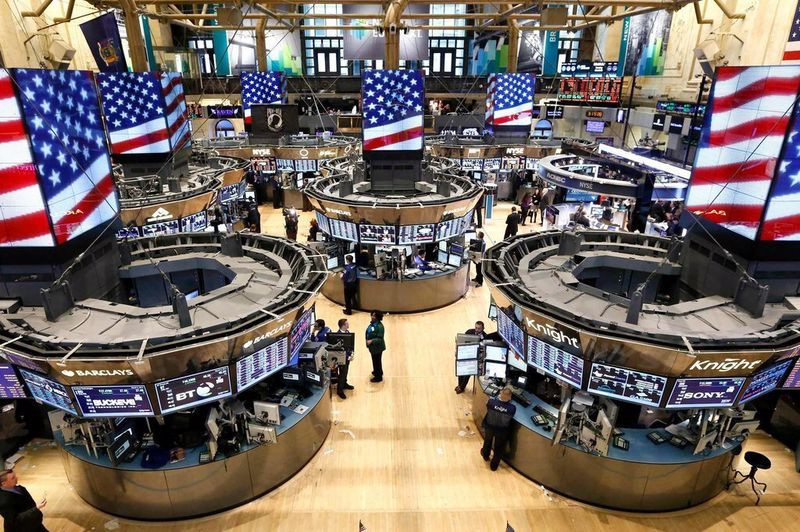

Washington has so often announced Russia's invasion of a neighboring country that traders have stopped taking these signals at face value. In addition, there were hopes that the brewing conflict could be avoided, and a solution to the situation around Ukraine by diplomatic means seemed possible.
However, when guns started talking instead of politicians, investors rushed to safe havens such as the US dollar, simultaneously selling stocks.
Recall that on Thursday morning, February 24, Russian President Vladimir Putin decided to conduct a special military operation in connection with the situation in Donbas.
In the evening of the same day, the West announced new sanctions against Moscow, affecting large Russian banks and state-owned companies.
Against this background, the greenback jumped to the highest values since June 2020, the EUR/USD pair showed one of the largest one-day declines in several months, dropping almost 200 points from the 1,1305 mark from which it started, and key Wall Street indexes during the session showed a decline reaching 2.5-3%.
However, the markets recovered fairly quickly from the shock caused by increased geopolitical tensions in eastern Europe.
Traders sighed with relief, as the west refrained from sanctions against the Russian energy sector, and the decision to disconnect the country from the SWIFT settlement system was not made.
The improvement in risk sentiment led to the fact that the protective dollar was forced to retreat from the multi-month highs noted earlier in the area of 97.70 points, and ended Thursday's trading near 97.00 points.
At the same time, the main US stock indexes turned to growth, were able to shrug off intraday losses and ended the session in positive territory. In particular, the S&P 500 gained 1.5%, rising to 4288.7 points.

The EUR/USD pair also managed to recover. Touching the multi-month low in the area of 1.1105, it finished around 1.1200.
Concerns about a slowdown in the global economy had eased by the end of the week, and the greenback continued to retreat from the highest values since June 2020. The USD index fell by almost 0.6% to 96.53 points on Friday.
Tracking the reduction of the geopolitical premium, the key Wall Street indexes ended trading higher. Thus, the S&P 500 increased by 2.24% to 4,384.65 points. Following the results of the last five days, the index rose by 0.8%.
The EUR/USD pair also ended the session in positive territory, having managed to win back most of the positions lost on Thursday. It rose by more than 0.6% and closed near 1.1270.
Back on Friday, the markets behaved as if the conflict in Ukraine did not matter much, but at the beginning of the new week, investors were forced to desperately seek safe havens for fear of drowning in a sea of negativity.
The protective dollar rose sharply against most of its major competitors on Monday, including the euro, before correcting somewhat.
Over the weekend, the west announced new sanctions to punish Moscow for its invasion of Ukraine, and Russian President Vladimir Putin put the country's nuclear forces on high alert, which added to nervousness in the markets.
"In the near term, the greenback may rise above the resistance level of 97.47," Commonwealth Bank of Australia strategists predict.
The dollar should remain the most safe haven in these unprecedented times, ING analysts say.
They are waiting for the USD to return to the recent high of about 97.70 and do not rule out that the US currency may break even higher.
Safe assets are likely to remain in demand in the current conditions, according to analysts at BNY Mellon.
"Last week, the yen and the Swiss franc did not show significant growth, so for now we will just focus on the dollar," they said.
Charles Schwab believes that the euro will come under pressure due to the threat of rising energy prices, falling business activity and consumer confidence in the eurozone.
The head of the European Commission, Ursula von der Leyen, said that residents of European countries will suffer because of the restrictive measures imposed on Russia.
"The Europeans will have to pay the price for these measures," she said.
The EUR/USD pair opened with a large bearish gap, but then managed to minimize losses, bouncing off the local low at 1.1125 in the direction of 1.1200.
So far, the euro has relatively successfully avoided a collapse, but it may fall even more, ING believes.
"There have already been reports that Europe is considering quotas/limits on Russian energy carriers. It is obvious that in such a scenario, Europe will have to pay much higher energy prices, and economic growth forecasts will have to be lowered," the bank's analysts noted.
"This is a big macro week for the euro in light of the release on Wednesday of the February report on the consumer price index in the eurozone. But, given the events in eastern Europe, we doubt that a stronger CPI of the eurozone will be enough to reverse the bearish mood for EUR/USD. If there is no unexpected breakthrough in the negotiations between Ukraine and Russia, the pair will break through to 1,1000 this week," they added.
According to forecasts, consumer prices in the eurozone will reach a new record level of 5.3% in February.
Such data will add to the European Central Bank's headache ahead of the March meeting.
Earlier, the central bank said that at the upcoming meeting it would conduct a comprehensive assessment of the economic prospects after the start of Russia's military operation in Ukraine.
ECB chief economist Philip Lane said last week that the Russian-Ukrainian conflict could lead to a reduction in economic growth in the eurozone by 0.3-0.4% this year.
This was the "average scenario" presented by Lane at an informal meeting of the ECB Governing Council last Thursday, which took place a few hours after Russia's invasion of a neighboring state.
Lane also presented a harsh scenario in which the GDP of the currency bloc will decrease by almost 1%, and a soft scenario in which events in Ukraine will not affect the European economy, which is currently considered unlikely.
It is still difficult to say whether the parties will want to end the conflict and seek a diplomatic solution.
If this happens, the EUR/USD pair may make a significant rebound. On the other hand, the lack of progress and further escalation of the crisis may lead to the fact that the single currency will face additional selling pressure.
"The escalation of the Ukrainian crisis may inflate stagflation in the eurozone and delay the ECB's exit from the accommodative policy. The relative weakness of the euro, as well as continuing geopolitical and economic risks, may discourage foreign investors from returning to European capital markets in the foreseeable future, while further deterioration of the external imbalances of the currency bloc may reduce the net demand for the euro from corporations. We believe that the EUR/USD pair may remain close to recent lows in the near term," Credit Agricole economists said.
As for the dollar, the scale of its growth, according to analysts at Commonwealth Bank of Australia, will depend on a further jump in volatility, the volume of the sale of global stocks and the assessment of the tightening programs of leading central banks.
US stock indexes start the week with a decline. So, the S&P 500 loses about 0.5% on Monday.
Even after the growth at the end of the week, the broad market index is still 8.6% below the record high reached in January.
Could it get any worse? It is not excluded. The Federal Reserve may fail with a smooth and effective taming of inflation. In addition, there may be a real threat of the use of nuclear weapons.
But there are also ways to improve the situation. If the war ends quickly or if the Fed returns to a soft policy, the market may react with a strong recovery.
On Wednesday and Thursday, the Fed chairman will report to the US Congress, where he will clarify his position before the March FOMC meeting.
It is enough for Fed Chairman Jerome Powell to utter similar words said earlier by ECB President Christine Lagarde to give a new impetus to growth for the stock market.
On Friday, the ECB president said that the central bank is ready to take any action necessary to ensure price stability and financial stability in the eurozone.
"Uncertainty is likely to slow down consumption and growth. The availability of options and flexibility are still needed. On March 10, we will analyze what to do next," Lagarde said.
Some traders are confident that the Fed's actions now carry great risks, since the central bank, based on the current situation, may raise interest rates higher and faster than expected. Their opponents, on the contrary, believe that the geopolitical situation will push the central bank to more prudent decisions.
Money markets currently estimate the probability of a 25 basis point increase in the federal funds rate at the March FOMC meeting at 95%. At the same time, the invasion of Russian troops in Ukraine put an end to speculation that the Fed would raise rates by 50 basis points.
With the escalation of sanctions against Russia and the persistence of increased volatility in the market, Powell, will at least have to assure investors this week that the central bank will take steps to combat rising inflation, as the economic outlook becomes increasingly uncertain.
Since Monday's economic calendar does not contain any significant releases, geopolitical headlines continue to be the main driver for the EUR/USD pair.
The nearest resistance is at 1.1200, and further - at 1.1260 and 1.1300.
On the other hand, short-term support formed at 1.1150. If the pair closes below this level, it risks continuing to fall to 1.1120 and 1.1070.